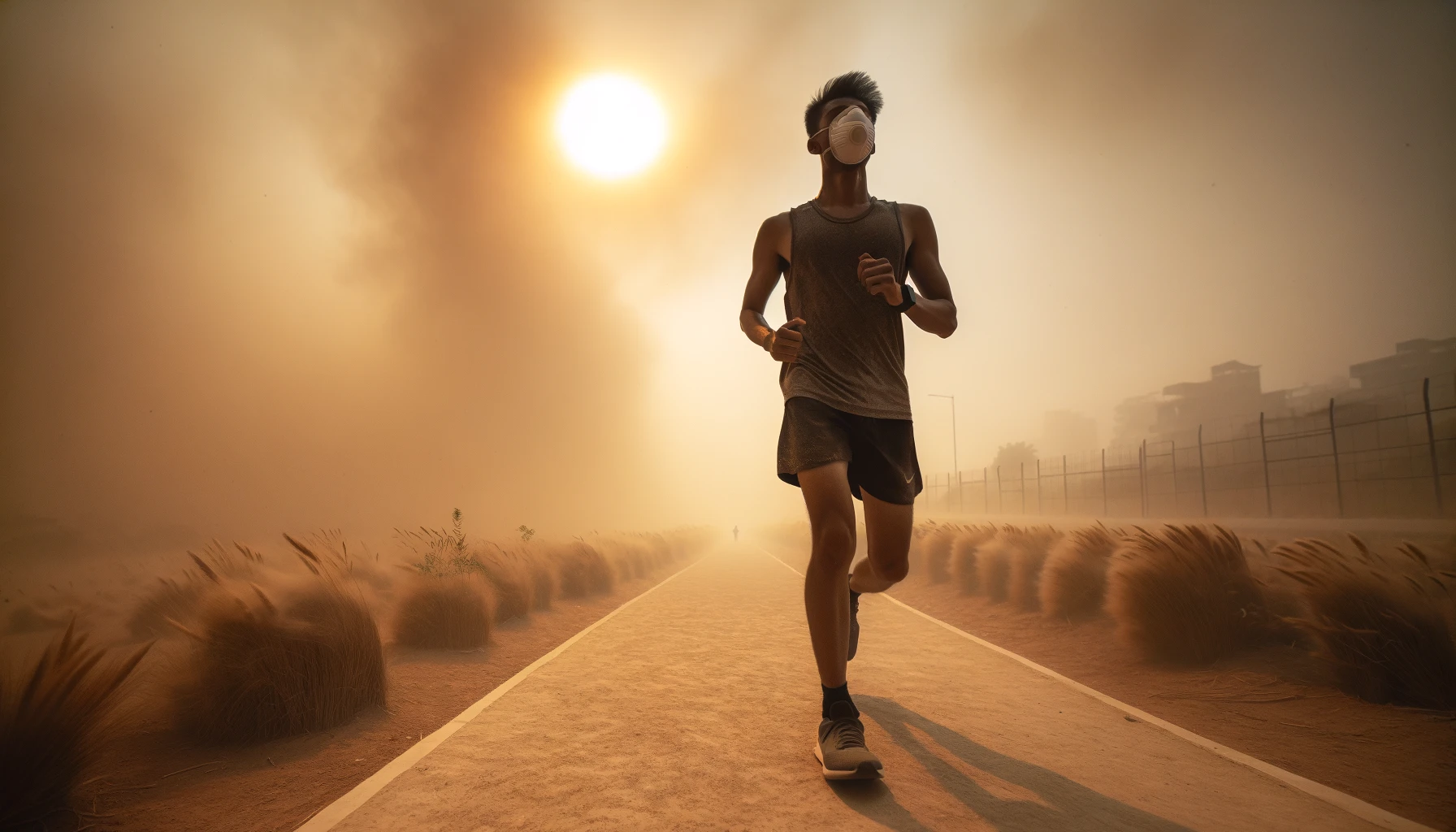Calima, a meteorological phenomenon characterized by the presence of dust and particles suspended in the air, is very common in certain regions, especially in areas near deserts or islands like the Canary Islands. Training during calima can be challenging due to the degraded air quality, which can have health consequences. However, with the right precautions, it is possible to maintain an effective and safe exercise routine.
What is Calima?
Calima is a concentration of dust, sand, and other contaminants in the atmosphere. These particles can be transported by the wind from the Sahara to distant places, affecting visibility and air quality. During calima episodes, it is common to see a hazy sky and a reduction in air clarity.
Effects of Calima on Health
Exposure to calima can have several negative health effects, especially for people with pre-existing respiratory conditions such as asthma or bronchitis. Common symptoms include eye, nose, and throat irritation, difficulty breathing, coughing, and, in severe cases, respiratory infections.
Tips for Training During Calima
1. Monitor Air Quality
Before going out to train, it is crucial to check the air quality levels. There are apps and websites that provide real-time information on air quality. If pollution levels are high, it is better to opt for indoor training.
2. Adjust Training Intensity
During calima episodes, it is advisable to reduce exercise intensity. High-intensity activities increase the amount of air we inhale, which can increase the number of harmful particles entering our lungs. Opt for low to moderate-intensity exercises to minimize this risk.
3. Stay Hydrated
Calima can increase the feeling of dryness in the environment. Make sure to stay well-hydrated before, during, and after exercise. Water will not only keep you hydrated but also help your body eliminate toxins and particles you may have inhaled.
4. Train at Appropriate Times
Try to avoid the times of the day when calima and pollution are most intense, usually mid-morning and early afternoon. Opt to train early in the morning or late in the afternoon when particle levels tend to be lower.
5. Use Masks and Protection
If you decide to train outdoors, consider using specialized sports masks that filter dust and pollutants. Also, protect your eyes with sports goggles to avoid irritation.
6. Opt for Indoor Workouts
If outdoor conditions are unfavorable, perform your workouts indoors. You can use gym equipment, do home workout routines, or attend classes at sports centers. Indoor training will allow you to stay active without exposing yourself to the risks of calima.
7. Listen to Your Body
Pay attention to your body’s signals. If you experience symptoms such as difficulty breathing, dizziness, or severe irritation, stop exercising immediately and find a place with better air quality. Health should always be the priority.
Conclusion
Training during calima can present challenges, but with the right measures, it is possible to stay active without compromising health. The key is to be informed about atmospheric conditions, adjust the intensity of your training, and take precautions to protect yourself from the negative effects of calima. Staying well-hydrated, opting for indoor workouts, and using appropriate protection are essential strategies to continue enjoying an active life even in adverse conditions.
Remember that health is the most important thing, and adapting your exercise routine to the weather conditions will not only help you stay fit but also protect your long-term well-being.
Keep training and taking care of yourself, no matter the circumstances!
References
- Agencia Estatal de Meteorología (AEMET)
- World Health Organization (WHO)
- Health Tips for Training in Calima Conditions
For more articles and tips on training and wellness, visit our website and follow us on our social media.


Leave a Reply